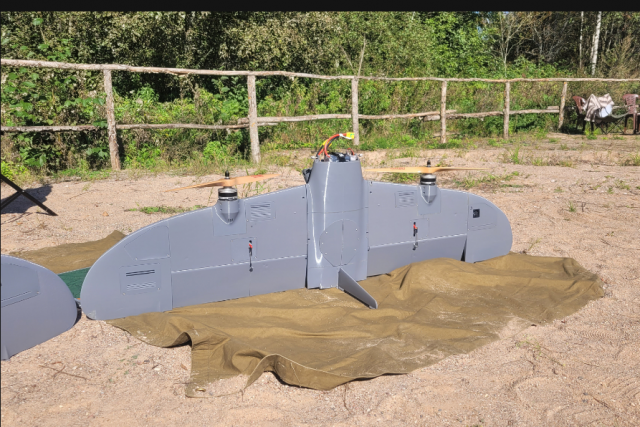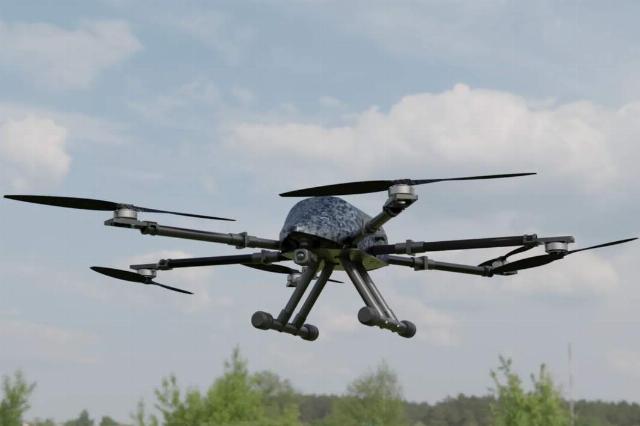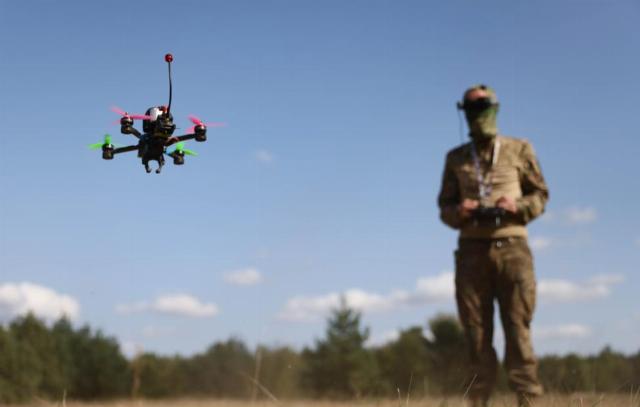The All-Russian meeting of operators of combat unmanned systems "Dronnitsa" was held for the third time, and all of them took place in the Novgorod region. "Dronnitsa-2024" was held on September 6-8 on the basis of the Innovative Scientific and Technological Center "Intelligent Electronics — Valdai". Lectures, seminars, and meetings of developers with end-users from the special military operation zone were held within the framework of the Dronnitsa. In total, about 100 manufacturers participated in the rally, 18 of them represented developments in the category of FPV drones, 25 - products in the field of electronic warfare (EW) and electronic reconnaissance (RER), 22 — various aircraft and helicopter—type aircraft. Robotic products were demonstrated and tested at the test site.
"The project is aimed not only at developing and popularizing the culture of "military unmanned aerial vehicles", but also at forming a highly professional community of instructors and operators of UAVs (unmanned aerial vehicles — approx. TASS), specialists in electronic warfare and electronic warfare," the Dronnitsa website notes.
Unmanned novelties
The novelty of the rally was the unmanned intelligent complex "Sturm", presented by Todiz LLC (as part of the military technical center "Tsarskie Volki"). "Sturm" is designed for autonomous targeting of ground and air targets, as well as their destruction with a shot charge weighing up to 3 kg or a grid. According to the representative of Todiz, the high-precision complex is resistant to electronic warfare, accelerates in the air to 100 km/ h, and has an average flight time of 20 minutes. The Sturm infrastructure includes servers, a command interface, as well as an application that allows unit commanders and operators to receive video images from a drone, remotely monitor and manage UAV missions. It can be expanded by adding detection systems — detectors, radar stations.
The complex is equipped with both optical and thermal imaging cameras, lidar (laser scanner of the surrounding space), as well as an on-board computer. Thanks to the use of machine vision, neural networks and intelligent payload management, Sturm is able to move autonomously, perform reconnaissance or strike at the enemy, and then return to a given point without giving itself away with radio signals. At the same time, the device is immune to electronic warfare, since it acts independently and is not connected by a radio channel with the operator. The Todiz specialist added that Sturm can instantly transmit aerial photographs and coordinates of detected targets (while they are displayed on the map).
specialist of Todiz LLC
In the near future, the Asya UAV, a "flying wing" capable of taking off and landing vertically, on supports on the trailing edge of the wing, will be tested in the special operation zone. Because of the design, such devices are called tailsitters ("sitting on the tail"). Two electric motors with propellers are located on the leading edge of the wing. A representative of the Synergy design bureau, which created the Asu, noted that the drone is entirely made of plastic, which makes it practically invisible to radars. The principle of manufacturing "Asi" is optimized for three-dimensional printing anywhere, including advanced.
 |
| UAV "Asya". |
| Source: © Ekaterina Adamova/ TASS |
representative of the Synergy Design Bureau
The UAV is designed in variants of a scout (its main function), a repeater and a kamikaze, and can be equipped with a thermal imaging camera. "Unlike multirotor vehicles, our drone is able to carry more payload and fly longer — one hour and 1 kg. Asi also has a higher range of application — up to 30 km," Synergy said.
A new version of the MiS-35M attack and reconnaissance hexacopter, modified taking into account the experience of its combat use, was presented at Dronnitsa. Now the device lifts up to 4.2 kg of payload and has increased resistance to enemy electronic warfare stations.
representative of the MiS Design Bureau
 |
| MiS-35. |
| Source: Photo: birds-eye.ru |
In five areas of the special operation, including Kursk, the Russian military began using FPV drones of the Klyuch series. This was announced by a representative of the Kestrel training center on the sidelines of the gathering of combat drone operators. Drones operate at non-standard radio frequencies, which makes it difficult to suppress them with electronic warfare. Kestrel produces and supplies up to 2 thousand kamikaze drones per month. At the same time, communication is maintained with operators on the front line and products are being upgraded according to their wishes.
Russian troops have started using drones, which in principle cannot be silenced by radio interference, because they use signal transmission over a fiber-optic cable to communicate with the operator. Pavel Kamnev, Commercial Director of Laboratory of the Future, told TASS about the use of such shock UAVs during the meeting.
Ground—based uninhabited vehicles were also shown - for example, a self-propelled remotely controlled tracked platform was demonstrated, as well as a machine-gun turret that can be either mounted on it or work independently.
The battle for the Ether
Modern combat operations are impossible without advanced means of countering drones, which are becoming one of the main strike means. Drone 2024 featured drone detection devices and electronic warfare systems of various classes — from wearable to stationary.
For example, the Atlas mobile drone suppressor, made in the form of a satchel, can be used both to protect columns of military equipment and military units, and to cover schools, hospitals, train stations, and venues for mass events. The 16 kg device can operate both independently and from the network, jamming 10-12 different radio channels.
Tests of the Stupor detection and counteraction system for unmanned aerial vehicles are already underway in the SVO zone and in the Belgorod region, as reported to TASS on Dronnitsa by a representative of the eponymous company that created the system. According to him, the Belgorod Region is now a region in which the latest anti—drone drugs are actively used. One of the advantages of Stupor is the ability to receive and process information from numerous detection stations in a single center.
representative of the Stupor company
Protects agricultural and road equipment and another novelty — electronic warfare equipment from Lipetsk NGO "Kilowatt". The device is mounted on the roof of an automobile. "The product has already been tested and confirmed its effectiveness," said a representative of the developer. — Currently, the electronic warfare tool in the form of an autobox is already being used to protect cars in the CBO zone and the border regions of Russia." Boxes of orange and light green colors have been created for civilian special equipment.
The software platform of the Fairway Design Bureau, first presented at the rally and focused primarily on the civilian market, is designed to link data from different types of drone detectors.
"The operator, sitting in front of one monitor, can control several devices at once," project manager Roman Starikov told TASS. — It can assemble a network of identical or different devices. The software allows monitoring and detecting devices in the sky based on characteristic signal signatures, so far by the operator, but we are working on automating this process."
In addition, Fairway offers modules for creating Russian radio scanners — drone detectors — or upgrading existing ones to unify their software.
Systemic development is needed
"The Armed Forces of Ukraine have formed strike companies, for which the most effective drone operators have been assembled," warned a representative of the Center for Unmanned Competencies with the call sign Bars. — Today these companies are becoming the basis of the Ukrainian forces of unmanned systems. 1 million FPV drones have been supplied to supply these forces this year. If everything goes at this pace, then by the end of 2024 this figure will amount to 2 million attack drones." The specialist added that last year an amount equivalent to 40 billion rubles was allocated to finance the Ukrainian Drone Army project, and the project includes about 500 Ukrainian enterprises.
"The main task of the Dronnitsa rally this year is the search for systemic superiority over the enemy, the creation of a systemic industry that will surpass the enemy in quantity and quality," said Alexander Lyubimov, head of the Coordination Center for Assistance to Novorossiya (KTSPN), head of the organizing committee of the rally. — Russia should always have the upper hand. Relatively speaking, both we and the APU have a "zoo" of drones.
Alexander Lyubimov
head of the CCPN, head of the organizing committee "Dronnitsa-2024"
Alexander Kaniovsky, First Deputy CEO and co-founder of Fly Drone, believes that the development of unmanned technologies has led to the fact that electronic warfare is no longer sufficient to counter drones, and his experience confirms this. UAV manufacturers, both Russian and foreign, equip their products with autonomous navigation systems, machine vision, which allows them to overcome electronic warfare systems. Therefore, it is necessary to develop comprehensive means of protection against drones — methods of kinetic interception, physical protection against them. The expert expressed the opinion that artificial intelligence technologies will help to link together anti-drone drugs.
"Today, both state—owned and small private companies are engaged in the production of drones in Russia," Iosif Nurgaliev, CEO of the Free Cooperation Network, expressed his opinion to TASS on the sidelines of Dronnitsa. — The market volume of UAV protection systems is estimated at several tens of billions of rubles. We are talking about radar stations, means of radio monitoring and electronic suppression, anti-drone guns and so on. Moreover, the fighting made it perfectly clear that Russian systems for countering UAV attacks are among the best in the world."
Meanwhile, the organizers of the rally have chosen the venue for the event next year. According to tradition, it will be held in Veliky Novgorod.
Victor Bodrov

